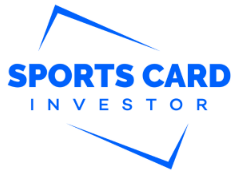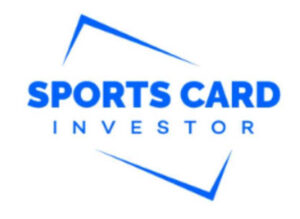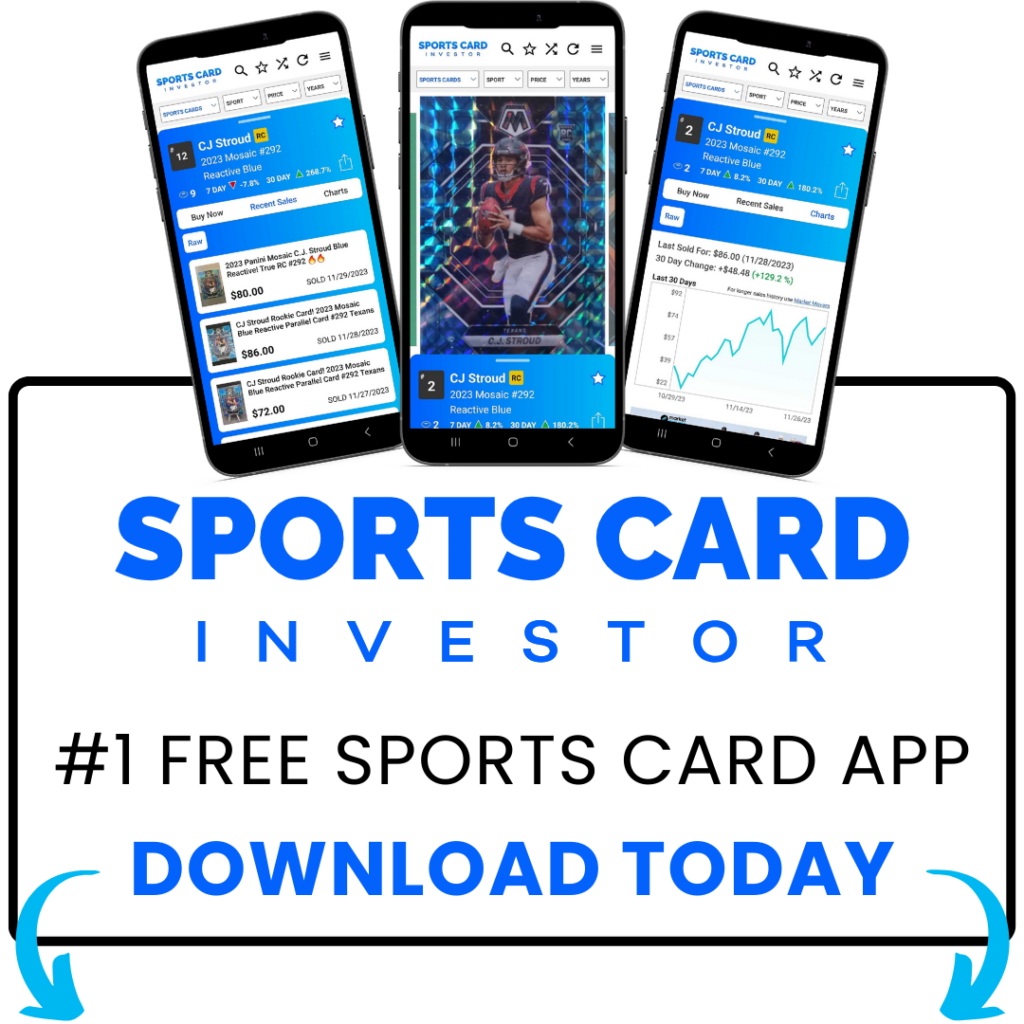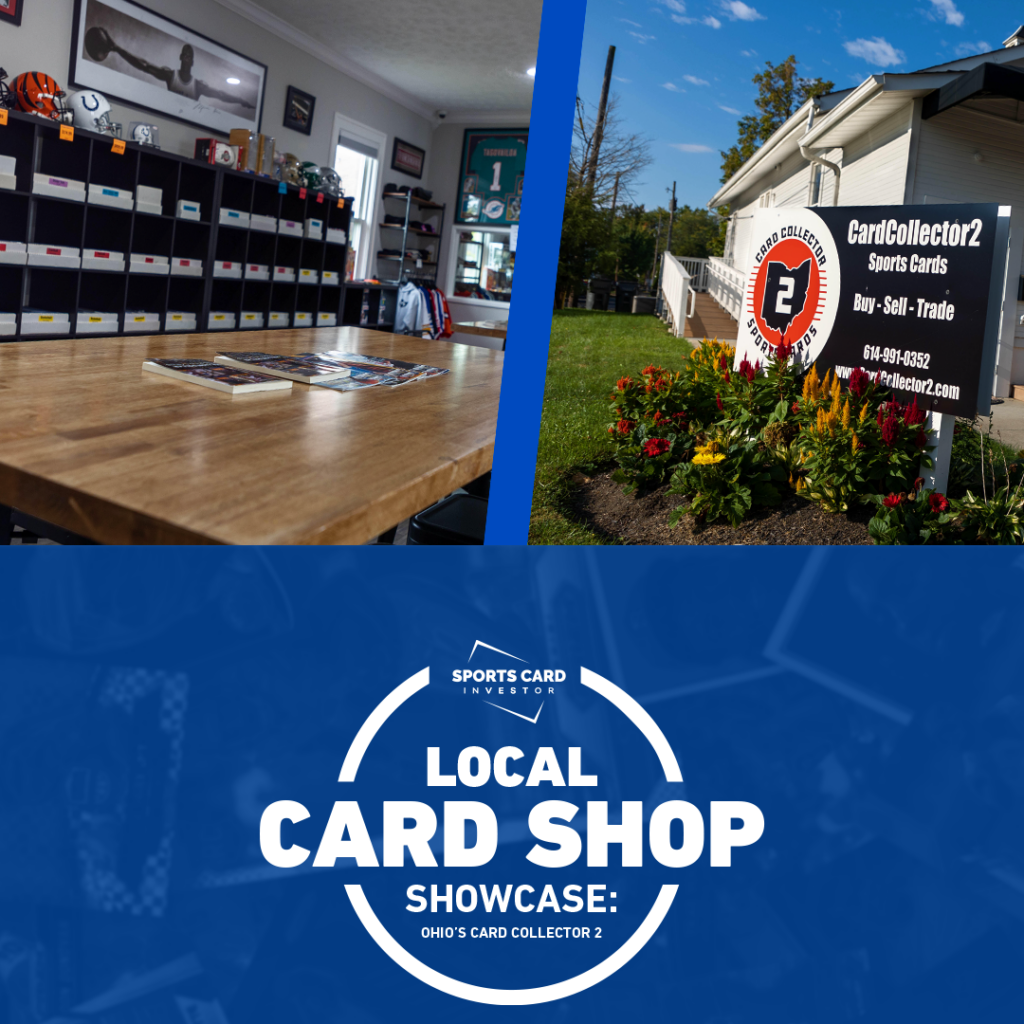
Local Card Shop Spotlight: Ohio’s Card Collector 2
It’s probably safe to say that the Cleveland Browns’ 2021 season has not gone as quarterback Baker Mayfield would have scripted it. At Week 6’s conclusion, the team was a middling 3-3 while Mayfield was tied for second in the NFL in sacks and had just two 250-yard passing games. And much like his quarterback rating, Mayfield’s card prices have stumbled a bit, too. His 2018 Donruss Optic rookie card was selling for $275 when the season kicked off, but has dropped to $127 after Cleveland’s October 17 loss to Arizona.
Not that you need to tell any of that to customers at Ryan Johnson’s Card Collector 2 shop in Columbus, Ohio. They already know everything about Mayfield. Johnson, himself an all-pro in the social media game (@cardcollector2), says that the Browns star is one of the most sought-after players at his shop. Rookie cards, newer parallels, autographs—they want it all.
Card Collector 2, a sleek, contemporary card shop that’s been open since May 2019, has those Mayfield items and just about everything else a hobbyist could want, from vintage hoops cards for old-school collectors to trade nights specifically aimed at young fans. In the following interview with Sports Card Investor, Johnson discusses his shop’s origins, building a clientele and collecting his beloved Ohio State Buckeyes.
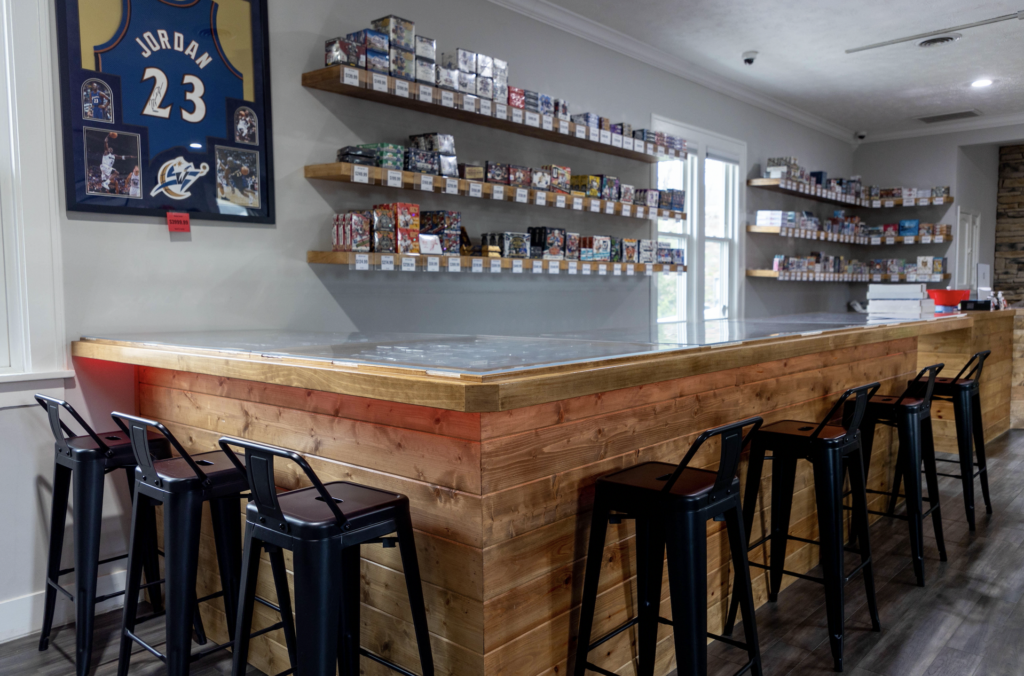
When did you first fall in love with sports cards?
So, my card journey started out when I was really, really young, like in the late ‘90s with Pokémon cards. That’s where I found cards [interesting]. The principal starts banning them from school because kids are stealing them. I had a kid I grew up with whose grandparents bought him some cards. I remember ripping like 2001 Rookies and Stars when I was eight. I was ripping those with him. And then, it really got more serious for me. I had a guy that went to the same high school as me who got drafted so I collected his stuff. And then it got more serious in like 2006. That’s when I really, really got into it. That’s when I got a phone and got access to the internet. So, that led me to online forums, watching YouTube videos and stuff like that. So, I was big on Sports Card Forum, Blowout Cards Forum and Beckett Forum. Before social media, I was doing it just on online forums; that was social media before social media. And then, about 2013, that led me to Instagram. I tell the story a lot that, if you were on any of those forums back in the day, [you know that] we used to use Photobucket to show pictures of the stuff we had for trade. And then what happened was Photobucket wanted to start charging money. But I was just a young kid trying to hustle. I was like, “I don’t want to spend $5 a month on this. I’m not trying to sign up for that.” So, I went to Instagram and was gonna use that to post pictures of my cards. That’s kinda how it all started.
How did it go from posting on IG to owning a shop?
Yeah, that’s a good question. I’m not sure if there was really a specific day when I was like, “Hey, this is what I want to do.” I think I saw it for the first time as something I can do back in 2016. So, I actually ended up getting some boxes of 2016 Origins football from a guy locally who wanted to move’em. I was involved in cards. It was all I did. But when I got’em, I had about 9,000 Instagram followers. I brought the boxes home and I went live to try to sell them. I sold every single box on a Friday night. There were like 27 boxes on a Friday night and I’m like, “This is crazy.” Boxes were much cheaper back then. It was probably about four grand. And at the time, that was wild to me. I remember doing that a couple times over the next couple months, where I would go get cards and sell those on Friday nights or I would get boxes and rip those. You know, 9,000 followers was a lot back then. I was early to Instagram so it benefited me. But yeah, when I started moving some boxes on Instagram Live on a Friday night back in 2016, I think that was really the first time I’m like, “Man this has some serious potential. I think that was really my eye-opener from “This is something that I’m gonna post pictures on” to “Hey, I think one day I might be able to make this a real business.”
To go from that to being a sponsor for The National’s big Trade Night in just a few years is impressive.
Yeah, I don’t know. I’m not very good at stopping and smelling the roses per se. I definitely realize that I’ve been fortunate enough to have built something pretty cool with some great people. But yeah, it’s wild. I honestly can’t even put it into words. When I started posting pictures, my intention wasn’t to build one of the most recognizable sports card brands in the industry. It was just a place to post pictures of some cool cards I had and make some trades. I had an interview yesterday with a guy for a Twitter thing and he asked, “What does social media mean to you?” And I told him that Instagram changed my life. It allowed me to pursue my passion and build a brand and have 13 employees. It’s really changed my life. It’s been really, really fun. I don’t ever take it for granted the fact that I’m able to live out my dream every day. I know a lot of people would kill to be in that position. So, I definitely don’t take it for granted.
Do you plan on being a part of the National in 2022?
Yeah, so as long as Jimmy [Mahan of Kentucky Roadshow Shop] still wants to run it, I will definitely be a part of it. Outside of something happening with five or six most important people in my life, I would not miss that show for the world. Geoff [Wilson, Sports Card Investor’s founder] asked me that when we were streaming live [from the 2021] trade night—how are you going to make this bigger and better? What can you do? I think the big thing is just giving back to those that are going to be there. I think that was kinda my goal when I started out.
So, you know the history behind it, right? Jimmy ran the first two [trade nights]. And then, he couldn’t run it for two years. And when I ran it, my whole thing was I have this attention on Instagram. Companies would pay for that attention, but we could use that attention for good and give back to the people that came. We had a lot of prizes and things like that. I would anticipate continuing the autograph-signing thing. I think that was cool. That’s a good way to give back to people. But I also think there’s additional things we could give back, right? Can we give away a trip to Trade Night? Can we give away a trip to cool card shops across America, a tour of Panini or tickets to an NFL game? Can we give away some really cool, memorable things there as well as everyday card things, boxes of cards, slabbed cards?
What are a few keys to having a successful card shop?
Care about your local community, the people who are going to walk into your shop on a daily basis really, really matter. Don’t overlook that. The online platform is great. I’m definitely glad we have it, but the local customers are going to be there on a Tuesday afternoon going through your stuff. That’s important.
Focus on kids. That’s big. I think that gets overlooked a lot. You’ve got to have somebody to pass it down to. There’s got to be a next generation. The hobby’s gotten very expensive and we need kids to be involved in it, so definitely have an emphasis on kids.
And then, a two-part one I would say is that you don’t know everything, so be willing to take advice. And then, going into that, relationships matter. When I first started out, you’re young, you’re ready to start hustling and you think you know a lot [about the business], but there are people that have been through the ups and downs of the market, there are people that have built major card stores over the last 5, 10, 50 years that have good advice and can talk about things you couldn’t even imagine. I think that’s an important thing that really helped me get to where I am—focusing on the relationships but realizing I don’t know everything. I think those are the three [factors] that I would say matter.
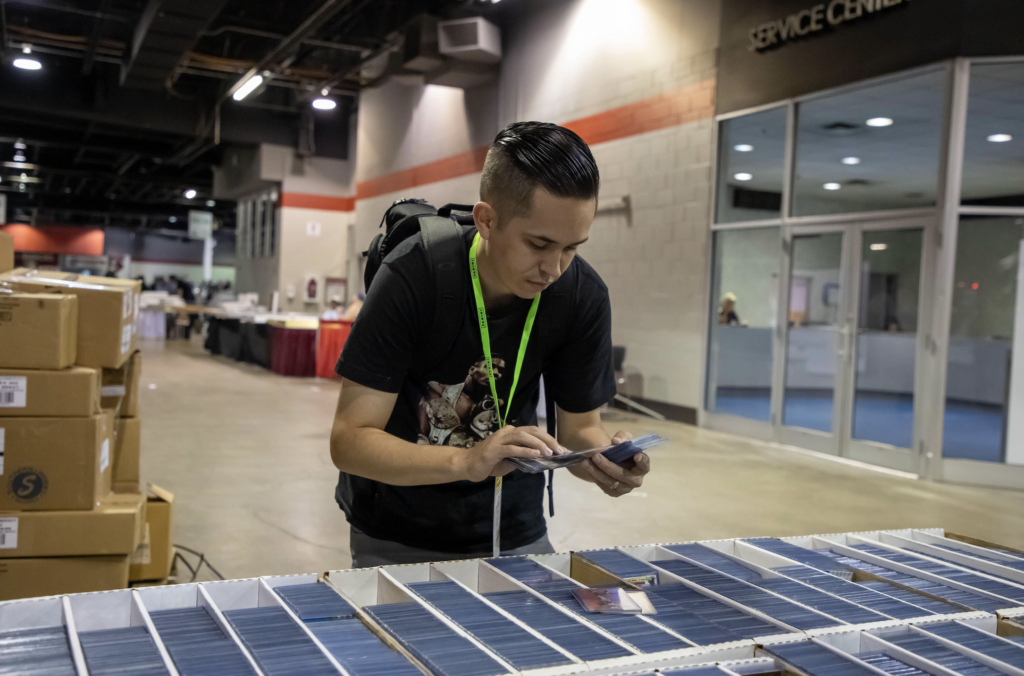
Let’s go back to that local customer just a little bit. Tell me what the Ohio collector is asking for these days.
We sell a lot of football. Football is definitely our big seller. It’s really the yearly sport. Basketball and baseball can be very seasonal at times. Same with hockey. But football is year-round. I sell a ton of Joey Votto. He’s been my best-seller since I opened. We don’t sell a ton of baseball, but when we have Joey Votto, it doesn’t have a problem selling. We do pretty well with value boxes. So, your $1, $5 and $10 boxes are always being looked through. That’s something the customers have really enjoyed. And then your local legends, from newer guys like Joe Burrow and Baker Mayfield to LeBron James, Joe Thomas, Archie Griffin or Eddie George. A lot of the staple players from the local teams have always been big sellers for us.
Who would I find in Ryan’s personal collection?
So, the stuff I collect the most is the rare Ohio State stuff. I’m looking for unique patches, super-cool autos, just rare, unique Ohio State stuff. I grew up in Columbus. Ohio State is my jam. There’s not much in the world I care about more than Ohio State football. It’s one of my favorite things on Earth. Your Ohio State logo patch, your Braxton Miller, your J.T. Barrett, your Zeke [Elliott], your Chase Young [cards] are what I can’t get enough of.
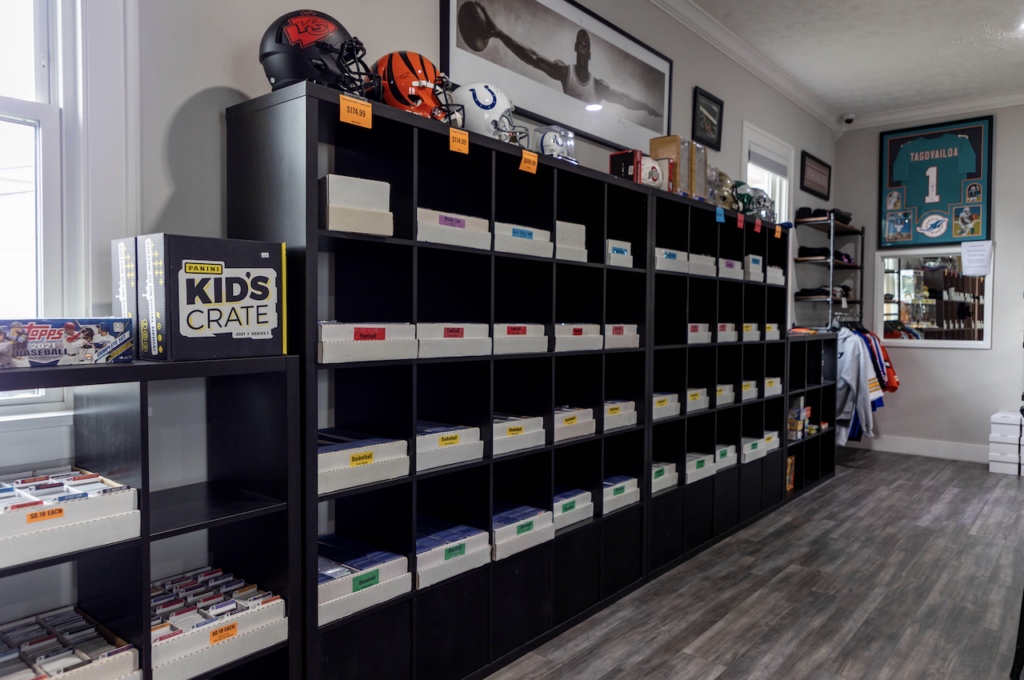
Let’s talk about another Ohio State guy—Justin Fields. For the collector who will want to add his cards to their collection this season but they may not have thousands for the crazy parallels or autographs, what’s a strategy for them to have with acquiring his cards?
I would always say look for things that make them different. There’s a lot of products, a lot of variations and a lot of parallels. Even with all of that, there’s still things you can look for that stand out among the rest, meaning serial-numbered cards. So, when you’re going for your Prizms, Selects or Optics, find a serial-numbered card. Even if it’s out of 299 or 399, it still beats something that’s not numbered.
And I think the team color parallel is something that is still a little sneaky in the market right now. I think some of that stuff has gotten attention, especially if you look at the cards like the Luka Doncic Blue Prism [rookie card] and what that card has become. I think that the team color parallel is gonna play out long term in the Prizms, Optics and Selects. I even think PSA 9s [are smart]. That may be tougher [to find] on some of the newer guys, but I think the PSA 9, PSA 10 silver refractor stuff is a market for a lot of newer collectors to get into. It never hurts to have something graded. Something serial numbered or team colored would be where my head goes if you’re looking for something [for your collection].


